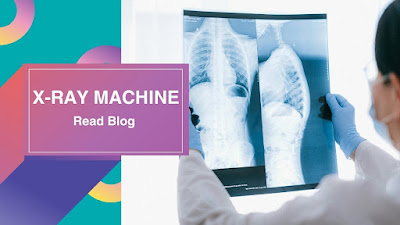Radiation Protection Devices: Safeguarding Healthcare Professionals and Patients
In modern healthcare, diagnostic imaging and interventional procedures have become indispensable tools for accurate diagnosis and treatment. Technologies such as X-ray, CT scans, fluoroscopy, and nuclear medicine have transformed medical care, enabling early disease detection and life-saving interventions. However, these advancements also introduce a significant challenge—exposure to ionizing radiation.
Healthcare workers, particularly radiologists, cardiologists, surgeons, and technicians, are at the frontlines of this challenge. Prolonged or repeated exposure to radiation, even at low doses, can lead to long-term health effects. That’s where radiation protection devices play a crucial role, ensuring safety without compromising clinical performance.
As a trusted global medical technology company, Trivitron Healthcare offers an extensive range of high-quality radiation protection solutions designed to protect healthcare professionals and patients from harmful exposure.
Understanding Radiation Risks in Healthcare
Radiation exposure in medical settings comes mainly from ionizing radiation, which can penetrate tissues and potentially damage DNA. Short-term effects may include skin redness or burns in high-dose scenarios, while long-term risks include cataracts, reduced bone marrow function, and even increased cancer risk.
The severity of radiation effects depends on several factors:
Exposure Time – The longer the exposure, the greater the risk.
Distance from Source – Radiation intensity decreases significantly with increased distance from the source.
Type of Radiation – X-rays, gamma rays, and other ionizing radiation vary in penetration power.
Shielding – The presence of effective radiation protection devices drastically reduces exposure.
Given these risks, global regulatory bodies such as the International Commission on Radiological Protection (ICRP) and Atomic Energy Regulatory Board (AERB) mandate strict adherence to ALARA principles—keeping radiation doses “As Low As Reasonably Achievable.”
What Are Radiation Protection Devices?
Radiation protection devices are specialized tools, garments, and equipment designed to reduce radiation exposure to safe levels. They work primarily by either:
Absorbing or blocking radiation before it reaches the body
Creating a physical barrier between the radiation source and the user
These devices are used in diagnostic imaging rooms, interventional radiology labs, operating theaters, and nuclear medicine facilities.
Types of Radiation Protection Devices
At Trivitron, radiation protection solutions are designed to meet diverse clinical needs, offering both personal protective equipment (PPE) and structural shielding products.
1. Lead Aprons and Vests
Lead aprons are among the most common radiation protection devices in hospitals. They contain lead or lead-equivalent composites that absorb scatter radiation. Trivitron offers:
Front protection aprons for standing procedures
Wrap-around aprons for complete coverage
Lightweight lead-free aprons for improved comfort without compromising safety
2. Thyroid Shields
The thyroid gland is highly sensitive to radiation. Trivitron’s thyroid collars fit comfortably around the neck, preventing scatter radiation from reaching this vulnerable area.
3. Leaded Eyewear
Prolonged exposure to radiation can increase the risk of cataracts in healthcare professionals. Leaded glasses offer essential eye protection, ensuring high optical clarity while effectively blocking scatter radiation.
4. Radiation Protective Gloves
For interventional radiology and cardiology procedures where hands are close to the radiation source, leaded gloves provide critical protection without reducing tactile sensitivity.
5. Gonad Shields
Particularly important in pediatric radiology, gonad shields protect reproductive organs from unnecessary exposure.
6. Mobile Lead Barriers
For added flexibility, mobile barriers can be positioned between staff and the radiation source. These are ideal for operating rooms and cath labs.
7. Structural Shielding
Trivitron’s expertise extends to designing permanent radiation shielding solutions, including lead-lined walls, windows, and doors, ensuring entire facilities meet safety compliance standards.
Advanced Materials in Radiation Protection
Traditional radiation protection devices use lead due to its high density and superior radiation attenuation. However, modern innovations have introduced lead-free and composite materials, which:
Reduce weight, improving comfort during long procedures
Maintain equivalent or better radiation attenuation properties
They are more environmentally friendly and easier to dispose of than lead-based products
Trivitron invests in research to offer lightweight yet high-protection gear, enhancing both safety and wearability.
Choosing the Right Radiation Protection Devices
When selecting radiation protection devices, healthcare facilities should consider:
Radiation Dose Levels – Match the protection level to expected exposure.
Comfort and Fit – Devices must be comfortable for prolonged use to encourage compliance.
Durability – Quality construction ensures long-term performance.
Certification – Ensure compliance with international safety standards.
Trivitron’s products are rigorously tested and certified, ensuring every device meets or exceeds industry benchmarks.
Best Practices for Radiation Safety
Even with the best radiation protection devices, safety protocols must be strictly followed:
Time, Distance, Shielding – Minimize time near the source, maximize distance, and use effective shielding.
Regular Equipment Checks – Inspect protective gear for cracks or damage.
Proper Training – Educate staff on correct device usage and storage.
Radiation Dose Monitoring – Use dosimeters to track cumulative exposure.
By combining technology with awareness, healthcare teams can significantly reduce occupational radiation hazards.
Why Choose Trivitron Radiation Protection Devices?
Trivitron Healthcare stands out for its commitment to innovation, safety, and comfort. Our radiation protection solutions are:
Ergonomically Designed – For ease of movement during long procedures.
Custom-Fit Options – Tailored to individual needs for better coverage and comfort.
Global Standard Compliant – Meeting AERB, CE, and IEC guidelines.
Sustainably Manufactured – With eco-conscious materials wherever possible.
We partner with hospitals, clinics, and imaging centers to deliver end-to-end radiation safety solutions, from personal protective gear to complete shielding infrastructure.
Conclusion
In the fast-evolving world of medical imaging and interventional procedures, radiation safety is not optional—it’s essential. Radiation protection devices safeguard the well-being of healthcare professionals and patients, enabling life-saving diagnostics and treatments without compromising safety.
With decades of expertise, Trivitron Healthcare remains a trusted name in providing advanced, reliable, and comfortable radiation protection solutions. By investing in high-quality protective gear, healthcare facilities not only meet regulatory compliance but also demonstrate their commitment to the safety and well-being of their teams.



Comments
Post a Comment